mobile View, to the German Version tap the flag


- Republic of Angola
- presidial republic
- own name: República de Angola
• Flag
• Historical Flags
• Meaning/Origin of the Flag
• Coat of Arms
• Meaning/Origin of the Coat of Arms
• Aircraft Roundel
• Map
• Numbers and Facts
• History
• Origin of the Country's Name
• Cabinda
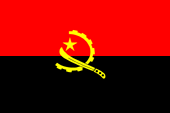
National flag,
ratio = 2:3,
Source, by: Wikipedia (D),
Corel Draw 4






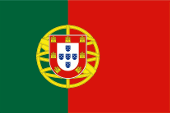
National flag of Portugal,
ratio = 2:3,
Source, by: Corel Draw 4





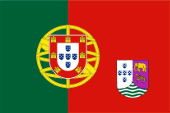
sixties of the 19th cent.,
purposed flag for Angola,
ratio = 2:3,
Source, by:
Wikipedia (D)



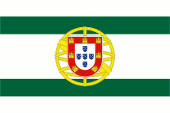
to 1935,
Flag of a High Commissioner,
ratio = 2:3,
Source, by: Flaggenbuch 1939



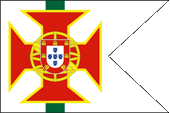
1935–1961,
Flag of a District Commandant,
ratio = 2:3,
Source, by: Flaggenbuch 1939



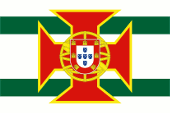
1935–1975,
Flag of the Governor General,
ratio = 2:3,
Source, by: Die Welt im bunten Flaggenbild




The national flag was introduced on the 11th of November, 1975 after achieving independence from Portugal. It is based on the flag of the MPLA, the successful liberation-movement, which flew a horizontally red-black striped flag with a golden star since 1964 . Now the flag shows in the centre a halved gear or cogwheel, a star and a machete. Red stands for the blood spilt during the struggle for freedom, black stands for the Dark Continent of Africa, and gold (yellow) points to the natural resources of the country. The gear/cogwheel symbolizes the working class, the machete stands for the farmers and the star for progress and internationalism. In the times of the Portugese colony was solely in use the Portugese national flag because they saw the colonies as permanent component of the motherland and not as outer possessions. This implys that Portugese colonies never had own flags, even if there were ambitions in the sixties of the 20th century to introduce flags for the colonies by placing of the coat of arms of the colony in the flying end of the Portugese national flag. But this plans became never realized.
Source: Flags of the World,
Die Welt der Flaggen,
Flaggen Wappen Hymnen

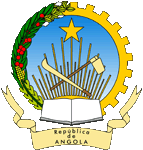
since 2010,
Coat of arms of Angola,
Source, by:
Wikipedia (EN),
Corel Draw 4

1935–1975,
Coat of arms of Angola,
Source, by:
Wikipedia (D)
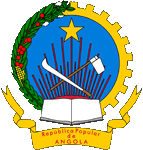
1975–1992,
Coat of arms of Angola,
Source, by:
Wikipedia (EN),
Corel Draw 4
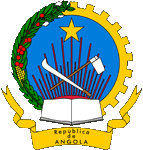
1992–2010,
Coat of arms of Angola,
Source, by:
Wikipedia (EN),
Corel Draw 4

The coat of arms of Angola was introduced, as the flag, in 1975. It also shows the machete crossed with a hoe, symbolizing work and the start of the armed struggle. Above this symbolic cross the yellow star. Its five points stand for unity, freedom, justice, democracy and progress. The rising sun below the tools represents the formation of the new nation. The opened book is a symbol for education and culture. The coat of arms is bordered by a black, half a gear/cogwheel, as well as corn plants, and coffee and cotton twigs. It was changed slightly in 1992, when the name of the state in the golden banner below the coat of arms changed from "Repúblika Popular de Angola" into "Repúblika de Angola".
Source: Flags of the World,
Die Welt der Flaggen,
Flaggen Wappen Hymnen

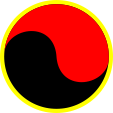
Aircraft Roundel,
Source, by: Wikipedia (EN)
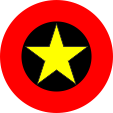
1975–1980,
Aircraft Roundel,
Source, by: Wikipedia (EN)

Location:
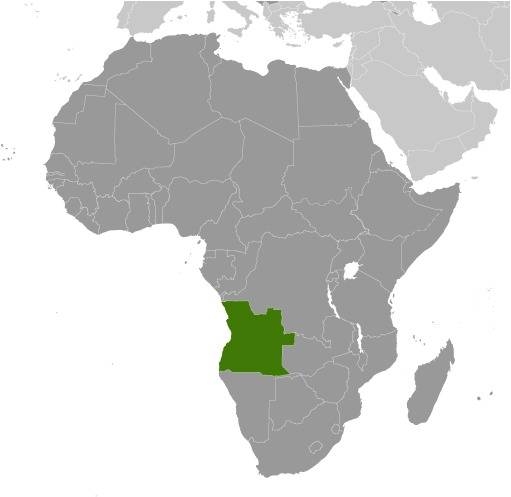
Source: CIA World Factbook
Map of the country:
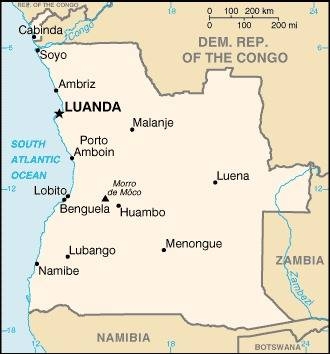
Source: CIA World Factbook

Area: 481.351 square miles, thereof exclave Cabinda 3.020 sq.mi.
Inhabitants: 25.789.000 (2014), thereof 37% Ovimbundu, 25% Kimbundu, 13% Bakongo, 2% Mestico (mixed European and native African), 1% European (thereof 170.000 Portuguese), 22% other
Religions: 41,1% Roman Catholic, 38,1% Protestant, 8,6% other, 12,3% Non-Religious
Density of Population: 54 inh./sq.mi.
Capital: Luanda, 6.945.400 inh. (2014)
official Language: Portugese
other Languages: Umbundu, Kimbundu, Kikongo, TuChokwe, Ngangela, Oshivambo
Currency: 1 Kwanza (AOA, Kz) = 100 Cêntimos
Time Zone: GMT + 1 h
Source: Wikipedia (D),
CIA World Factbook

13th century · the originally in the region living Khoisan peoples become displaced by immigrating Bantu ethnic groups
1482 · discovery by the Portuguese seafarer Diego Cao
1483 · Portugal establishes trading posts on the coast
1576 · Luanda founded
19th century · Portugal begins with the systematic conquest and occupation of what is now Angola
1885 to 1894 · Border treaties with Belgium, fixing of the border with the Belgian Congo
1886 · Border treaty with the German Empire, fixing of the border with German South West Africa
1905 · Border treaty with the United Kingdom, fixing of the border with Rhodesia
1951 · Portugal changes the colony of Angola to an overseas province (part of the mother country)
1959 · anti-colonial uprising
1960 · start of the war of independence under participation of four independence movements (FNLA, MPLA, FLEC and UNITA)
1964 · the independence movements are suppressed militarily
1973 · the guerrilla activities of the independence movements cease, de facto end of the war of independence
25th of April in 1974 · revolution in Portugal, overthrow of the Salazar regime, initiation of an immediate decolonization of the dependent territories, in Angola there are military clashes between the independence movements
11th of November in 1975 · the socialist MPLA proclaims the independence of Angola (People's Republic of Angola) in Luanda, the FNLA and UNITA do so in Huambo (Republic of Angola), beginning of the civil war, the FNLA suffers heavy losses and withdraws to Zaire
1983 · troops from South Africa invade 250 km deep into southern Angola and destroy bases of the rebel movement SWAPO of South West Africa (today Namibia), they are repulsed by Cuban troops
1991 · the MPLA breaks away from Marxism-Leninism, MPLA and UNITA agree on the establishment of a multi-party system
1992 · first free elections, the MPLA is victorious and wins also the presidential election, UNITA suspects electoral fraud, the civil war flares up again
1994 · peace treaty between the government and UNITA, integration of UNITA
1997 · formation of a national unity government under participation of UNITA
1998 · the civil war flares up again
2002 · Jonas Savimbi – the leader of UNITA – dies in the fighting, ceasefire, UNITA gives up the armed struggle and takes on the role of the leading opposition party
Source: Atlas zur Geschichte,
Wikipedia (D),

The name of Angola goes back to the title of the king of the ancient kingdom of Congo. It was "N'Gola".
Source: Handbuch der geographischen Namen


![]()





























